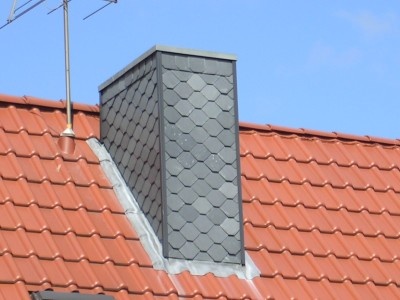 One of the important part of chimney is chimney flashing. Chimneys are also prone to leak, and flashing is usually one of the leak source. When this happens to the chimney, water damage spot can be easily seen and the flashing should be replaced as soon as possible. By making it do-it- yourself project, this will save as much as several hundred dollars. But before going into that direction, herewith things you should know.
One of the important part of chimney is chimney flashing. Chimneys are also prone to leak, and flashing is usually one of the leak source. When this happens to the chimney, water damage spot can be easily seen and the flashing should be replaced as soon as possible. By making it do-it- yourself project, this will save as much as several hundred dollars. But before going into that direction, herewith things you should know.
Finding Your Roof Slope
You will need to know how to find the slope of your roof, before you can start bending any metal. For this, a level and a two foot piece of scrap plywood are needed. Cardboard works if it’s a heavy grade and it won’t bend. Then, write “roof” on the bottom edge. Next, use the level to draw a line that is at least a foot long on the plywood from corner and label this “run.” Along the line marked “run” calculate another foot section. Use a square to draw a mark from the run line to the edge of the roof line. This line should be labeled “rise.” It is advisable to use this as a template to find the slope of the roof. You can begin to bend and cut the flashing necessary, once you have the correct dimensions for the slope.
Know How to Bend Metal
If you don’t have any experience with metal work before or the tools required to bend metal, this part is not going to be a do-it-yourself job. You will need to make straight bends in the sheet metal with a bending brake. You will want to call a sheet metal fabricating shop with your measurements to do it for you if you aren’t experienced in making complicated bends in metal.
Types of Bends Required in the Sheet Metal
You will requiresomedifferent types of bends in the sheet metal. Herewith is a list of the most common ones you will come across.
- Pre-Bent Step Flashing – These are frequently referred to as shingle tins. They are 8 by 8-inch pieces that will be stepped together.
- Front Base Flashing – This will need a sheet of metal at least 12 inches wider than the width of your chimney. This may require being adjusted once you get it home by bending the angle to match the roof slope.
- Front Cap Flashing, Side Cap Flashing – This is one of the most significant types of flashing to install. The cap flashing will prevent water from coming in around the cap. The cap is the most common place where water damage can occur. This is one that will undoubtedly need to be made to get it angles correctly.
- Back Cap Flashing – This is similar as the front and side cap flashing.
Making your own chimney flashing isn’t an easy job, particularly for the amateur. In fact, it’s difficult, requires special tools and precise measurements, and leaves no room for mistake. It is worth to consider, if you don’t think you are able to follow all the measurements and bend the metal properly then you should choose to not make it yourself and choose to have the flashing pieces fabricated for your roof.



